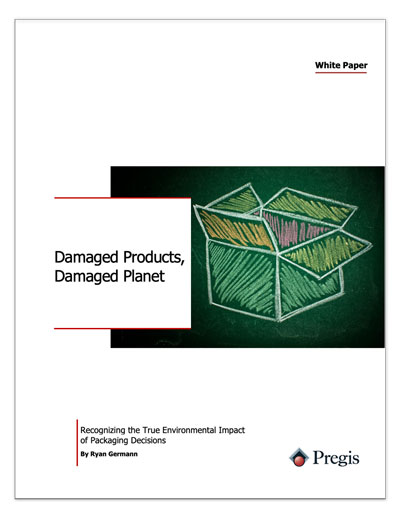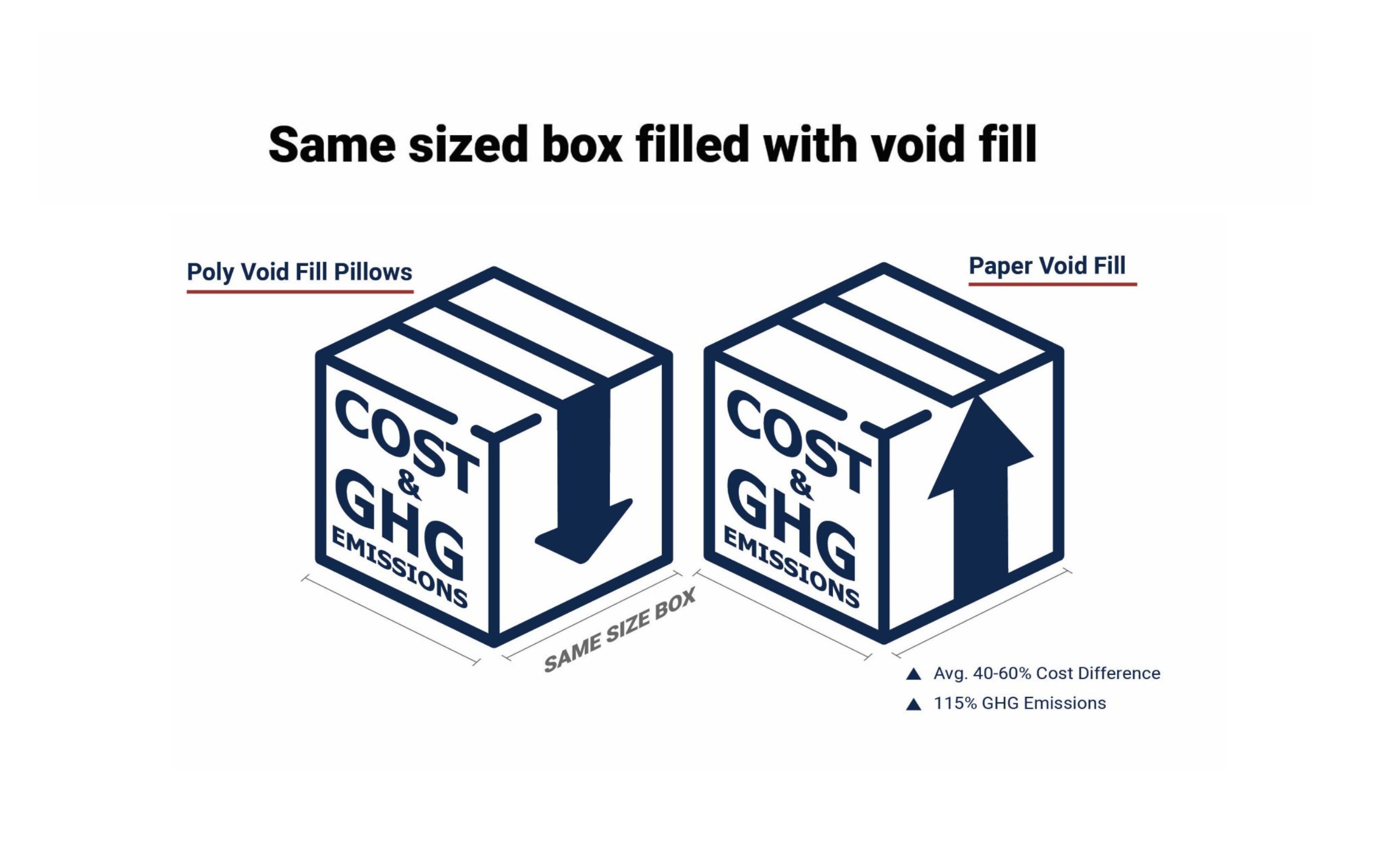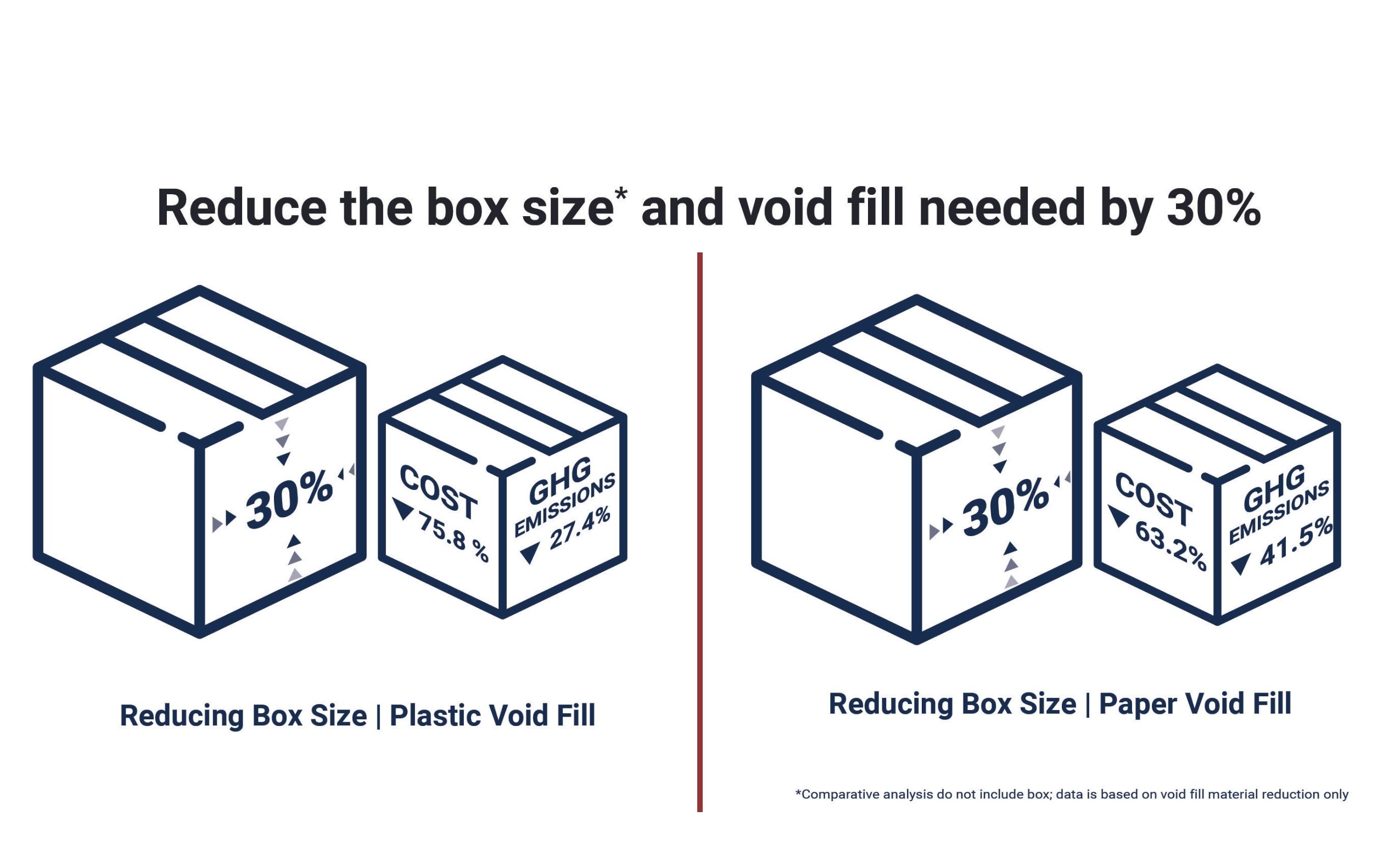5 Critical Factors to Evaluate when Considering Paper vs Poly
Amazon's shift to paper packaging has reignited the paper vs. poly debate. Pregis helps companies evaluate packaging choices based on protection, logistics, sustainability, operations, and cost to make the best decision.
Executive Summary
Amazon recently announced a significant shift towards paper-based void fill packaging, replacing 95% of the plastic air pillows used in their fulfillment operations across North America. This transition, highlighted in a recent press release, is part of a multi-year initiative supported by substantial investments in fulfillment operations. The move aligns with Amazon's mission to minimize waste and prioritize recyclable materials while using as little packaging as possible. The Amazon example has prompted companies to ask themselves if they should follow suit and switch to paper.
At Pregis, we are eager to help companies evaluate their options and make an informed decision about their packaging choices that align with their business objectives and sustainability goals.
Paper is advantageous for curbside recyclability, which is increasingly important for companies prioritizing sustainability and customer experience. Businesses can offset the additional cost of curbside recyclability by optimizing packing processes, reducing labor costs, resizing cartons, or switching to alternative packaging formats like cushioned mailers.
A comparison between paper and plastic void fill materials reveals that plastic air pillows are often the more cost-efficient solutions for void fill applications (meaning no cushioning protection is required) and typically boast a lower carbon footprint than paper. These pillows offer an attractive total cost of ownership due to reduced storage needs, lower shipping cost, and oftentimes faster packing speeds.
So, how do you arrive at the best decision for your organization? When evaluating your options, consider these five critical factors:
- Protection against damage
- Shipping and logistics
- Sustainability goals
- Fulfillment and operations
- Total cost of ownership
Read more to learn how Pregis can help.
Article
Retail giant, Amazon, recently delivered a welcome break from the political news media to report on their shift to paper packaging across a significant part of their North American operations. As detailed in a press release on June 20th, 2024, Amazon reported a transition of 95% of their box “filler” from plastic air pillows to a paper void fill solution. This multi-year transition has been enabled by significant investments in their fulfillment operations, the package design engineering teams and sourcing teams.
Amazon's leadership in sustainable packaging sets an example for the industry, demonstrating how aligning packaging choices with broader business objectives and sustainability goals can lead to innovative solutions and operational efficiencies. At Pregis, we’re pleased to be an innovation partner with Amazon to support their mission to “Ensure that customers receive their items undamaged, while using as little packaging as possible to avoid waste and prioritizing recyclable materials.”
We share in Amazon’s focus on protecting against damage, optimizing packaging material use and designing for circularity (in layman’s terms that means enabling recyclability at end of the products life, so it does not become landfill waste).
Curbside recyclability is a desirable packaging attribute for at-home disposal and a good way for consumers to make a positive impact. According to The Recycling partnership, 73% of US households have access to recycling making it a convenient option for consumers.
The Amazon example has prompted companies to ask themselves if they should follow suit and switch to paper. At Pregis, we are eager to help companies evaluate their options and make an informed decision about their packaging choices that aligns with their business objectives and sustainability goals.
Before making a change, here are a few considerations that should be evaluated:

1. Protection Needed to Prevent Damage
The most harmful thing from an environmental standpoint can be an increase in damaged products from not properly protecting the items you ship. Damaged products often end up as landfill waste. A second shipment must be sent in its place which doubles the carbon footprint to reship. This translates to a minimum of 2x the cost for the company to repeat the order – a conservative number in reality.
Not sure? Check out our Damaged Product, Damaged Planet white paper. 

2. Shipping & Logistics
As ecommerce fulfillment has continued to increase each year, maximizing the number of parcels on a truck has become paramount to the shippers. Dimensional weight shipping costs motivated companies to reduce the size of the shipping container which also reduced the amount of void fill packaging material needed to fill the space inside the box.
In some cases, companies have been able to eliminate small boxes altogether in favor of automated mailers.
Learn how we helped a luxury retailer reap the benefits of switching to mailers, yielding significant cost savings while improving their sustainable profile.
3. Sustainability Goals
Companies around the world have set forth sustainability goals for their organization. They vary by industry but a few of the more common goals that have an influence on packaging choices include recycled content goals, recyclability, reusability and carbon footprint reduction.
When the question is posed paper vs poly, you can look at a comparison of void fill materials used to pack the same size box. The results of an internally conducted cradle-to-grave lifecycle analysis (LCA) showed that the plastic void fill pillows had a lower carbon footprint and cost less when evaluated purely on the materials.
But as usual, there is more to the story. A transition between materials requires a full evaluation of the packaging application and performance requirements.
When only comparing materials used to fill the void, you will use less plastic by weight. Because of using less material in the box, the shipper's lighter weight and the lower carbon footprint of plastic, poly-based air pillows have an advantage.
However, if your motivation is curbside recyclability, paper will have the edge. Paper is a great medium for filling small voids within a box and can be a very efficient, versatile packing method. 
So, how do you arrive at the best decision for your organization?
Using the least amount of material to provide the right level of protection can yield freight savings, packaging material savings and create a more favorable carbon footprint for the smaller package. If you can reduce the box size and void fill material used by 30%, there are significant benefits as illustrated in this example.

4. Fulfillment and Operational Considerations
Identifying your key metrics for your packing and fulfillment operations is a critical part of the evaluation. Labor requirements, warehouse space, pack-to-ship fulfillment rates and WMS/OMS integration are all factors that should be evaluated when determining if a packaging change is in your future.
Pregis employs a proven process of working with customers to perform a holistic packaging value analysis. The analysis compares the many variables within your operation such as time to pack, labor costs, material costs of various packing options and configurations. This data can be supplemented with damage, freight and environmental impact to allow you to make an informed decision.
5. Total cost
Cost is always a consideration when making a change. Total cost of ownership is the best way to make an informed decision. This takes into account everything noted above in addition to packaging material price. Our engineering team at the Pregis IQ® can create and validate test your package design to help you make the right choice that aligns with your business and sustainability goals.
If you look to the Amazon example as inspiration, you can see that their journey required investments in their operations. It also required the appetite to pay a premium for curbside recyclable products as typically these command a higher price. These elevated product costs were neutralized however, by the many operational shifts that Amazon made such as switching their small boxes to mailers and upstream requirements for Ship in Product Packaging (formerly Ship in Own Container) which reduced the amount of packaging used.
Conclusion
Amazon’s leadership is challenging the packaging industry in positive ways. We commend Amazon for clearly identifying their company goals and methodically moving toward achieving their goals. Pregis has been working to support Amazon’s transition through the development of paper void fill solutions, the EverTec cushioned and non-cushioned mailers and automation-ready paper materials that are converted into a shipping container when paired with equipment.
At Pregis, we are well positioned to help companies make the best packaging choice. We have a comprehensive offering in paper and plastic based packaging that covers the full spectrum of inside the box protection to automated mailing & bagging solutions. On top of that, we are experts at helping our customers implement ergonomic, packer-centric workstations or semi to fully automated fulfillment operations to achieve operational excellence.
We are up for the challenge! We have a team at the Pregis IQ dedicated to helping you navigate the options. Let us help you make the right choice for your company and the environment.

